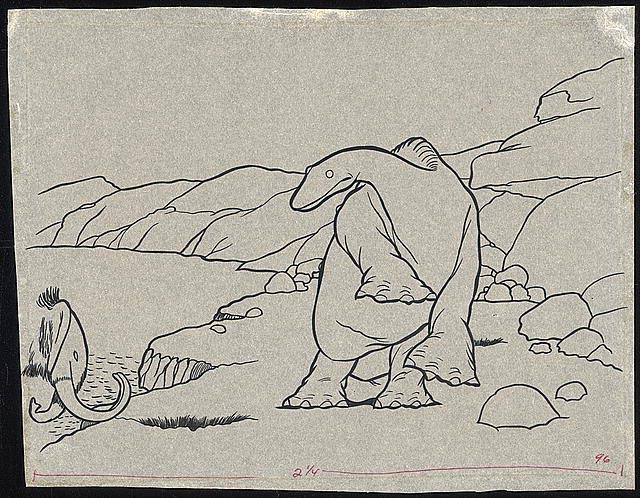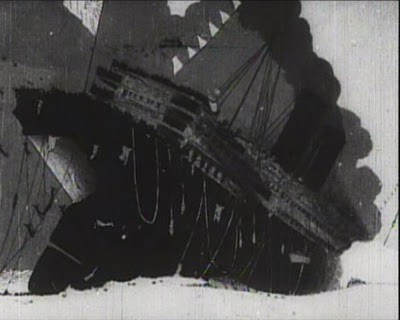 |
| Fig. 1 Gertie the Dinosaur [animation frame] |
 |
| Fig. 2 The Sinking of the Lusitania [Animation Frame] |
McCay's next work was a propoganda film about the sinking of the passenger liner RMS Lusitani in WWI. Made using cel animation, it is notable for its very realistic depiction of smoke and steam, as well as the general quality of the animation. Although a silent film, text boards provide the audience with information of what is happening, emphasising the pseudo-documentary nature of the piece; however the final text board is obviously propagandic in nature, and this undermines any apparant impartiality in the film.
List of Illustrations
Figure 1. Winsor McCay (1914) Gertie the Dinosaur [animation frame] [digital image] At: http://animationreview.wordpress.com/2010/06/21/gertie-the-dinosaur/ (Accessed on 21/03/2011)
Figure 2. Winsor McCay (1918) The Sinking of the Lusitania [animation frame] [digital image] At: http://animationreview.wordpress.com/2010/06/22/the-sinking-of-the-lusitania/ (Accessed on 21/03/2011)
Bibliography
Dr Grob's Animation Review (2010) Gertie the Dinosaur [Online] At: http://animationreview.wordpress.com/2010/06/21/gertie-the-dinosaur/ (Accessed on 21/03/2011)
Dr Grob's Animation Review (2010) The Sinking of the Lusitania [Online] At: http://animationreview.wordpress.com/2010/06/22/the-sinking-of-the-lusitania/ (Accessed on 21/03/2011)
Van Eaton Galleries (2011) A Brief Biography of Winsor McCay [Online] At: http://www.vegalleries.com/winsorbio.html (Accessed on 21/03/2011)

No comments:
Post a Comment